Comments / Questions (147)
![]() Karin wrote:
Karin wrote:
Ich habe noch eine frage, die verkürzten reihen wieder holen.heisst das wenn ich einmal kompl die reihe durch gestrickt habe, das ich von vorne wie am anfang drüber stricke?
24.04.2014 - 12:42DROPS Design answered:
Liebe Karin, die verkürzten R wiederholen Sie immer von *-*, wie bei "verkürzte R" beschrieben. Ein Rapport besteht also aus 8 R an der breitesten Stelle und aus 2 R an der schmalsten Stelle. Dann fangen Sie die verkürzten R wieder von vorne an.
26.04.2014 - 11:31
![]() Karin wrote:
Karin wrote:
Ich hänge fest bei A.2 c.2M re hier wenden. wie kann das muster mit unterschiedl Ma anschlag aufgehen?
23.04.2014 - 19:27DROPS Design answered:
Liebe Karin, vielleicht helfen Ihnen die Antworten zu den deutschen Kommentaren vom 11.04. und 20.02. weiter, dort wurde bereits erklärt, wie man im Muster wendet. Ansonsten können Sie gerne noch einmal fragen. Gutes Gelingen!
26.04.2014 - 11:29
![]() Nicole Schmidt wrote:
Nicole Schmidt wrote:
Hallo, ich habe eine Frage zu den Muster A.2 in der dritten Reihe bei 57 Maschen. Wie bekomme ich den Übergang zwischen den ersten 7 und den zweiten sieben Maschen hin, da der Übergang von B zu C Mitten in den Maschen ist, die zusammen gestrickt werden? Vielen Dank.
11.04.2014 - 15:44DROPS Design answered:
Liebe Nicole, am besten kümmern Sie sich nicht um den genauen Übergang, sondern beachten einfach, dass die 3. R nicht mit 1 M re anfängt wie die 1. R, sondern mit 2 M re zusammen. Das Muster wird also im Vergleich zur 1. R um 1 M versetzt. Dann stricken Sie einfach immer 1 Umschlag, 2 M re zusammen im Wechsel, am Ende dann 1 Umschlag und 1 M re. Sie stricken den gesamten A.2/A.3 über insgesamt 13-19-25 M (A.2A/A.3A = 3 M, A.2B/A.2B = 8-14-25 M und A.2C/A.3C = 2 M).
12.04.2014 - 11:24
![]() Seniel wrote:
Seniel wrote:
I notice when transitioning from the row K 1, A.2A, A.2 B over the next 8-14-20 sts, A.2 C, K 2, to the row A.1(= 23 sts) There seems to be large gaps between the K2 to the beginning of A.1... how can I prevent this? When watching the video it fast forwards over that EXACT part so Im not sure if there is a trick
06.04.2014 - 01:18DROPS Design answered:
Dear Mrs Senial, you will find different videos showing how to work short rows, you can use the method with wrap to avoid holes (see tab "Videos" at the right side of the picture). Happy knitting!
07.04.2014 - 09:57
![]() Felix Jacqueline wrote:
Felix Jacqueline wrote:
Bonjour, très joli modèle cependant un point à éclaircir le 1er rang ok 10mailles 2ème rang 25 mailles ce qui totalise les 35 mailles du 2ème rang je ne comprends pas le 3ème rang je totalise 19 mailles alors qu'il m'en faudrait 22 il manque 3 mailles à tricoter pour faire les 57 (1 end + a2a 3 + a2b 4 +a2a 3 + a2b 4 + a2c 2 + 2 end je compte 19 au lieu de 22 cordialement
02.04.2014 - 12:52DROPS Design answered:
Bonjour Mme Felix, on tricote A.2b sur les 14 m suivantes : (...), 1 m end, A.2A (=3m), A.2 B au-dessus des 14 m suiv (soit 2 fois le diagramme A.2B puis encore 1 fois sur les 2 m suiv = 2.5 fois le diag), A.2 C, 2 m end. Bon tricot!
02.04.2014 - 14:25Gisela wrote:
Hola, no entiendo lo de las filas acortadas, me podrian ayudar
31.03.2014 - 22:07DROPS Design answered:
Hola Gisela. Te recomiendo ver los videos que tienes asignados a este patrón (el apartado de videos está junto a los materiales).
02.04.2014 - 20:13
![]() Seniel wrote:
Seniel wrote:
THANK YOU. one more thing, do I continue the short rows through the whole thing or do I just do it for the first 8 rows then just follow normal pattern?
27.03.2014 - 03:28DROPS Design answered:
Dear Senial, continue pattern + short rows all the way until piece measures 15 3/4"-16½"-17 1/4" at the most narrow and 63"-66"-69" at the widest. Happy knitting!
27.03.2014 - 10:24
![]() Will Zegers wrote:
Will Zegers wrote:
Ik het rechterpand klaar maar problemen met het linkerpand. Hoe moet ik beginnen . Snap beschrijving let op begin in de 2e nld in à.1en à.3 niet!!!
25.03.2014 - 10:23DROPS Design answered:
Hoi Will. Omdat je begint met de verkorte toeren op de verkeerde kant begin je met de 2e nld in de teltekeningen A.1 en A.3
26.03.2014 - 12:39
![]() Yvonne wrote:
Yvonne wrote:
Goedenavond, Bedankt voor de video bij dit patroon. Na 6 keer uithalen heb ik het patroon nu onder de knie. Het is heerlijk om dit te breien. Nogmaals bedankt voor de duidelijke uitleg in de video
21.03.2014 - 21:44
![]() Will wrote:
Will wrote:
In het telpatroon klopt niet. In de 3e en 5e nld kom ik 4 St. Tekort. . Deze nld zijn de 35 St. Vd 3e nld. +8+a2c zijn 47 St. Ipv 51. Ook voor de 7e nld kom ik dan 4 St. Tekort. Kunt u mij helpen waar het niet klopt, wil heel graag beginnen aan dit leuke vestje
05.03.2014 - 14:43DROPS Design answered:
Hoi Will. Het telpatroon klopt. Het is belangrijk dat het aantal st hetzelfde blijft, en dat je bij het breien van A.2 goed in de gaten houdt dat het aantal samenbreien klopt met de omslagen. We hebben net een video klaar over hoe je dit telpatroon breit samen met de verkorte toeren. Hij zal morgen gepubliceerd worden.
05.03.2014 - 15:04
Summer Snug#summersnugjacket |
||||||||||||||||
 |
 |
|||||||||||||||
Knitted DROPS jacket worked in a circle with lace pattern in ”Paris”. Size: S - XXXL.
DROPS 154-8 |
||||||||||||||||
|
GARTER ST (back and forth on needle): K all rows. 1 ridge = 2 rows K. PATTERN: See diagrams A.1 to A.3. The diagrams show all rows in pattern seen from RS. SHORT ROWS: * Work 1 row over the first 10 sts on row, turn and work back. Work 1 row over the first 35 sts on row, turn and work back. Work 1 row over the first 51-57-63 sts on row, turn and work back. Work 1 row over all sts, turn and work back *. Repeat from *-*, i.e. 8 rows at the widest and 2 rows at the most narrow in 1 repetition. ---------------------------------------------------------- RIGHT FRONT/BACK PIECE: Worked back and forth on circular needle. Cast on 86-92-98 sts on circular needle size 6 mm with Paris. Work 1 ridge in GARTER ST - see explanation above. Then work pattern AT THE SAME TIME work SHORT ROWS – see explanation above (1st row = from RS): 5 sts in garter st, K 2, P 3, (turn here), K 2, A.1 (= 23 sts) (turn here), K 1, A.2A, A.2 B over the next 8-14-20 sts, A.2 C, K 2, (turn here), A.1(= 23 sts), K 2, P 3, K 2, 5 sts in garter st. Continue pattern until piece measures 40-42-44 cm at the most narrow and 160-168-176 cm at the widest. Work 1 ridge over all sts and cast off. LEFT FRONT/BACK PIECE: Worked back and forth on circular needle. Cast on 86-92-98 sts on circular needle size 6 mm with Paris. Work 1 ridge in GARTER ST - see explanation above. K 1 row from RS. Then work pattern AT THE SAME TIME work SHORT ROWS – see explanation above (1st row = from WS - NOTE: Beg on 2nd row in A.1 and A.3): 5 sts in garter st, P 2, K 3, (turn here), P 2, A.1 (= 23 sts), (turn here), P 1, A.3A, A.3 B over the next 8-14-20 sts, A.3 C, P 2, (turn here), A.1 (= 23 sts), P 2, K 3, P 2, 5 sts in garter st. Continue pattern until piece measures 40-42-44 cm at the most narrow and 160-168-176 cm at the widest. Work 1 ridge over all sts and cast off. ASSEMBLY: Sew tog the cast-on and cast-off edge. Place the two part towards each other so that the 5 sts in garter st in the widest side meet, and sew tog approx. 58-62 cm mid back, edge to edge – make sure that seam on the parts is mid under sleeve. |
||||||||||||||||
Diagram explanations |
||||||||||||||||
|
||||||||||||||||
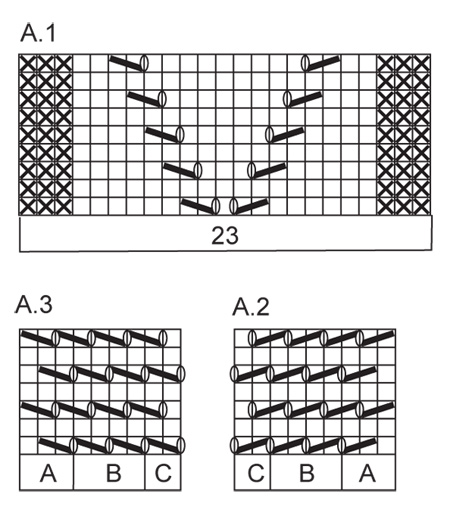 |
||||||||||||||||
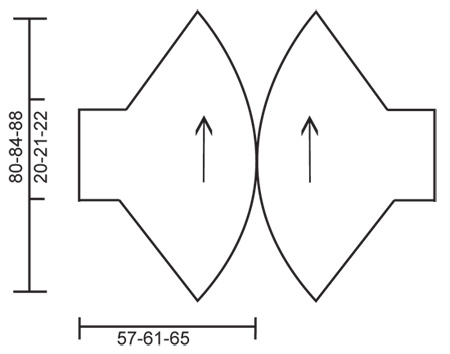 |
||||||||||||||||
Have you finished this pattern?Tag your pictures with #dropspattern #summersnugjacket or submit them to the #dropsfan gallery. Do you need help with this pattern?You'll find 20 tutorial videos, a Comments/Questions area and more by visiting the pattern on garnstudio.com. © 1982-2025 DROPS Design A/S. We reserve all rights. This document, including all its sub-sections, has copyrights. Read more about what you can do with our patterns at the bottom of each pattern on our site. |
||||||||||||||||







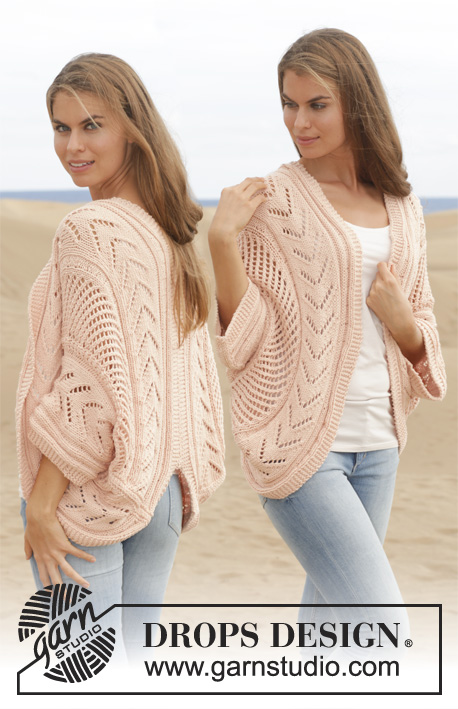
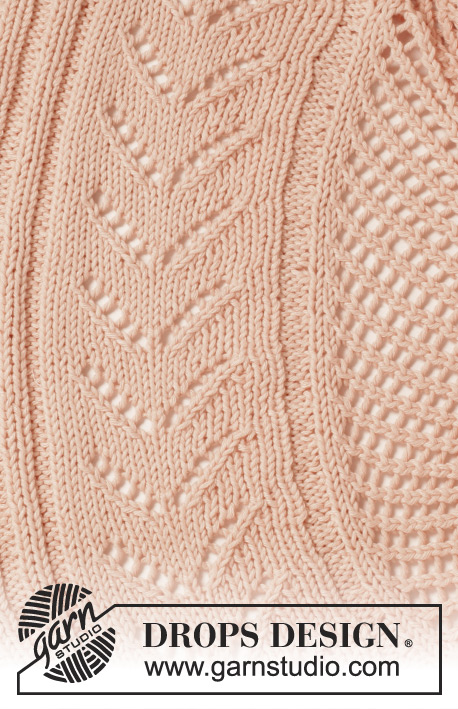

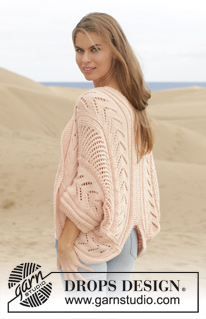
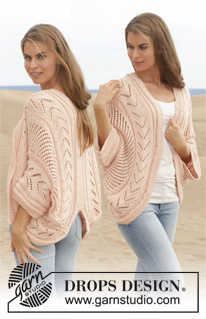





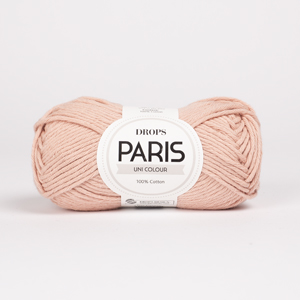
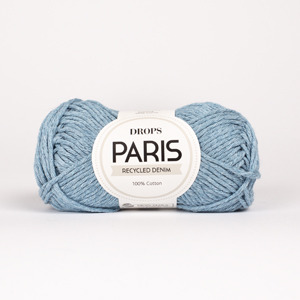















































Post a comment to pattern DROPS 154-8
We would love to hear what you have to say about this pattern!
If you want to leave a question, please make sure you select the correct category in the form below, to speed up the answering process. Required fields are marked *.